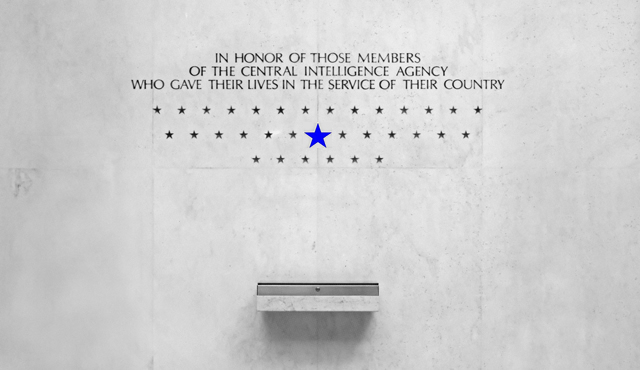|
Friendly
Fire
Book:
U.S. Military Drafted Plans to Terrorize U.S. Cities to Provoke War With Cuba
By David Ruppe
Code named Operation Northwoods, the plans reportedly included the possible assassination of Cuban émigrés, sinking boats of Cuban refugees on the high seas, hijacking planes, blowing up a U.S. ship, and even orchestrating violent terrorism in U.S. cities. The plans were developed as ways to trick the American public and the international community into supporting a war to oust Cuba's then new leader, communist Fidel Castro. America's top military brass even contemplated causing U.S. military casualties, writing: "We could blow up a U.S. ship in Guantanamo Bay and blame Cuba," and, "casualty lists in U.S. newspapers would cause a helpful wave of national indignation." Details of the plans are described in Body of Secrets (Doubleday), a new book by investigative reporter James Bamford about the history of America's largest spy agency, the National Security Agency. However, the plans were not connected to the agency, he notes. The plans had the written approval of all of the Joint Chiefs of Staff and were presented to President Kennedy's defense secretary, Robert McNamara, in March 1962. But they apparently were rejected by the civilian leadership and have gone undisclosed for nearly 40 years. "These were Joint Chiefs of Staff documents. The reason these were held secret for so long is the Joint Chiefs never wanted to give these up because they were so embarrassing," Bamford told ABCNEWS.com. "The whole point of a democracy is to have leaders responding to the public will, and here this is the complete reverse, the military trying to trick the American people into a war that they want but that nobody else wants." Gunning for War The documents show "the Joint Chiefs of Staff drew up and approved plans for what may be the most corrupt plan ever created by the U.S. government," writes Bamford. The Joint Chiefs even proposed using the potential death of astronaut John Glenn during the first attempt to put an American into orbit as a false pretext for war with Cuba, the documents show. Should the rocket explode and kill Glenn, they wrote, "the objective is to provide irrevocable proof … that the fault lies with the Communists et all Cuba [sic]." The plans were motivated by an intense desire among senior military leaders to depose Castro, who seized power in 1959 to become the first communist leader in the Western Hemisphere — only 90 miles from U.S. shores. The earlier CIA-backed Bay of Pigs invasion of Cuba by Cuban exiles had been a disastrous failure, in which the military was not allowed to provide firepower. The military leaders now wanted a shot at it. "The whole thing was so bizarre," says Bamford, noting public and international support would be needed for an invasion, but apparently neither the American public, nor the Cuban public, wanted to see U.S. troops deployed to drive out Castro. Reflecting this, the U.S. plan called for establishing prolonged military — not democratic — control over the island nation after the invasion. "That's what we're supposed to be freeing them from," Bamford says. "The only way we would have succeeded is by doing exactly what the Russians were doing all over the world, by imposing a government by tyranny, basically what we were accusing Castro himself of doing." 'Over the Edge' The Joint Chiefs at the time were headed by Eisenhower appointee Army Gen. Lyman L. Lemnitzer, who, with the signed plans in hand made a pitch to McNamara on March 13, 1962, recommending Operation Northwoods be run by the military. Whether the Joint Chiefs' plans were rejected by McNamara in the meeting is not clear. But three days later, President Kennedy told Lemnitzer directly there was virtually no possibility of ever using overt force to take Cuba, Bamford reports. Within months, Lemnitzer would be denied another term as chairman and transferred to another job. The secret plans came at a time when there was distrust in the military leadership about their civilian leadership, with leaders in the Kennedy administration viewed as too liberal, insufficiently experienced and soft on communism. At the same time, however, there real were concerns in American society about their military overstepping its bounds. There were reports U.S. military leaders had encouraged their subordinates to vote conservative during the election. And at least two popular books were published focusing on a right-wing military leadership pushing the limits against government policy of the day. The Senate Foreign Relations Committee published its own report on right-wing extremism in the military, warning a "considerable danger" in the "education and propaganda activities of military personnel" had been uncovered. The committee even called for an examination of any ties between Lemnitzer and right-wing groups. But Congress didn't get wind of Northwoods, says Bamford. "Although no one in Congress could have known at the time," he writes, "Lemnitzer and the Joint Chiefs had quietly slipped over the edge." Even after Lemnitzer was gone, he writes, the Joint Chiefs continued to plan "pretext" operations at least through 1963. One idea was to create a war between Cuba and another Latin American country so that the United States could intervene. Another was to pay someone in the Castro government to attack U.S. forces at the Guantanamo naval base — an act, which Bamford notes, would have amounted to treason. And another was to fly low level U-2 flights over Cuba, with the intention of having one shot down as a pretext for a war. "There really was a worry at the time about the military going off crazy and they did, but they never succeeded, but it wasn't for lack of trying," he says. After 40 Years Ironically, the documents came to light, says Bamford, in part because of the 1992 Oliver Stone film JFK, which examined the possibility of a conspiracy behind the assassination of President Kennedy. As public interest in the assassination swelled after JFK's release, Congress passed a law designed to increase the public's access to government records related to the assassination. The author says a friend on the board tipped him off to the documents. Afraid of a congressional investigation, Lemnitzer had ordered all Joint Chiefs documents related to the Bay of Pigs destroyed, says Bamford. But somehow, these remained. "The scary thing is none of this stuff comes out until 40 years after," says Bamford.
9/11 - Anatomy of a Great Deception "Real patriots ask questions." --Carl Sagan |

